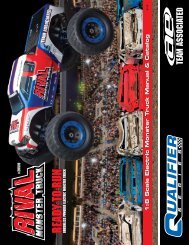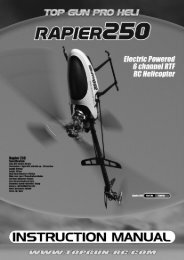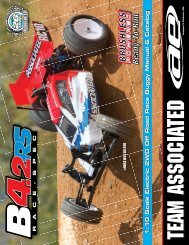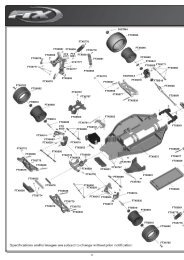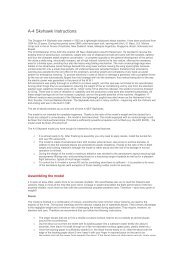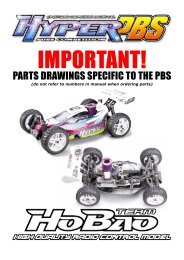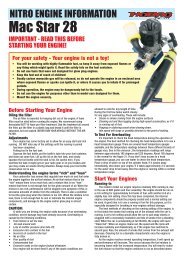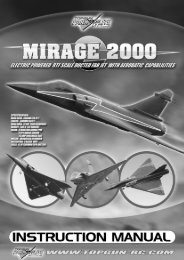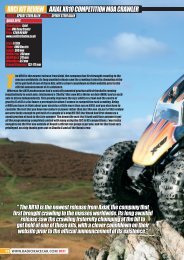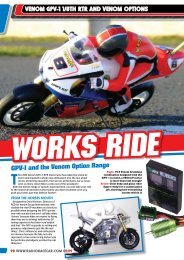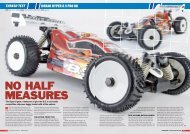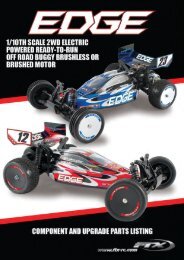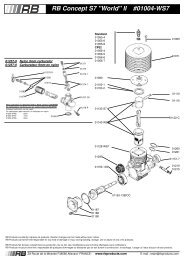rtf model - CML Distribution
rtf model - CML Distribution
rtf model - CML Distribution
You also want an ePaper? Increase the reach of your titles
YUMPU automatically turns print PDFs into web optimized ePapers that Google loves.
SECTION 6: FIRST FLIGHT<br />
BEFORE THE TEST FLIGHT<br />
On completion of the <strong>model</strong> take time to test the<br />
<strong>model</strong> in the workshop.<br />
Switch on the transmitter,<br />
connect the battery and<br />
double check that all<br />
surfaces operate in the<br />
correct manner without<br />
stalled servos.<br />
Check for adequate range<br />
with and without motor<br />
running.<br />
If everything is okay, take it to the flying field and<br />
rig it up again.<br />
Always follow the frequency control procedures of<br />
your local flying site and ensure that you have<br />
adequate third party insurance cover.<br />
Repeat the full pre flight inspection before flying.<br />
12<br />
FLYING<br />
WARNING<br />
Do not advance the throttle unless the <strong>model</strong> is<br />
restrained. With the powerful motor-fan<br />
combination producing up to 500g of thrust, the<br />
<strong>model</strong> will accelerate across a smooth surface<br />
very quickly.<br />
The F4 Phantom is capable of 5 to 10 minute flight<br />
times and can R.O.G (Rise Off Ground) from smooth<br />
metalled runways or very closely cut grass. A hand<br />
launch will be required If flying from normal grass<br />
or without undercarriage. .<br />
It is aerobatic and able to<br />
perform loops and rolls<br />
but due to its light weight<br />
it should not be flown in<br />
wind greater than 10mph.<br />
Control throws set during<br />
assembly will produce a<br />
<strong>model</strong> capable of flying<br />
smooth scale like performance and medium to high<br />
speed aerobatic manoeuvers.<br />
The control surface movements can be increased by<br />
moving the clevis connectors nearer to the control<br />
surfaces.<br />
To reduce movements move the pushrod<br />
connections nearer to the servo on the output arms<br />
and further out along the control surfaces horns.<br />
ENJOY YOURSELF BUT ALWAYS FLY SAFE!



